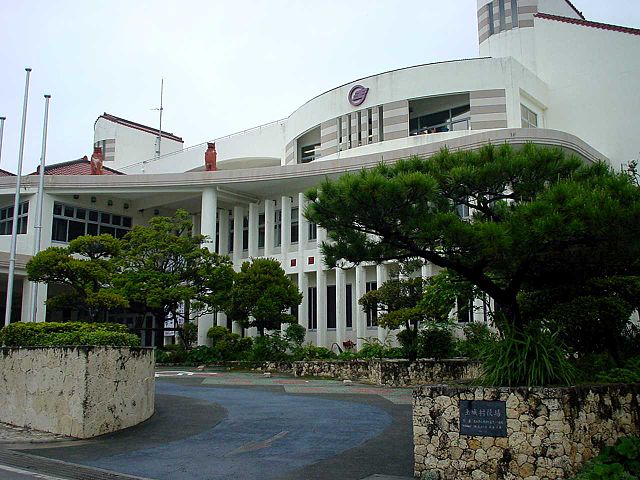Nanjō is a city located in the southern part of Okinawa Island in Okinawa Prefecture, Japan. Translated literally, the name Nanjō means "southern castle". Many castle ruins, called gusuku in the Okinawan language, can be found throughout the city. The modern city of Nanjō was established on January 1, 2006, from the merger of the town of Sashiki, and the villages of Chinen, Ōzato and Tamagusuku. Nanjō has an area of 49.69 km² and, on the date of its inception, a population of 44,043, and a density of 886.36 per km².
Clockwise from top left: Utaki Purified, Kudaka Island, site of Tamagusuku Castle, Nirai-kanai Bridge, Gyokusen Cave
Nanjō city hall
Izaiho traditional event in 1954
Sefa-utaki
Okinawa Island , officially Okinawa Main Island , is the largest of the Okinawa Islands and the Ryukyu (Nansei) Islands of Japan in the Kyushu region. It is the smallest and least populated of the five main islands of Japan. The island is approximately 106 kilometres (66 mi) long, an average 11 kilometres (7 mi) wide, and has an area of 1,206.98 square kilometers (466.02 sq mi). It is roughly 640 kilometres south of the main island of Kyushu and the rest of Japan. It is 500 km northeast of Taiwan. The total population of Okinawa Island is 1,384,762. The greater Naha area has roughly 800,000 residents, while the city itself has about 320,000 people. Naha is the seat of Okinawa Prefecture on the southwestern part of Okinawa Island. Okinawa has a humid subtropical climate.
Okinawa Island in 2015
The first of the Ryukyuan missions to Edo, the capital of Tokugawa shogunate
The last King Shō Tai
American troops in Okinawa, 27 June 1945








